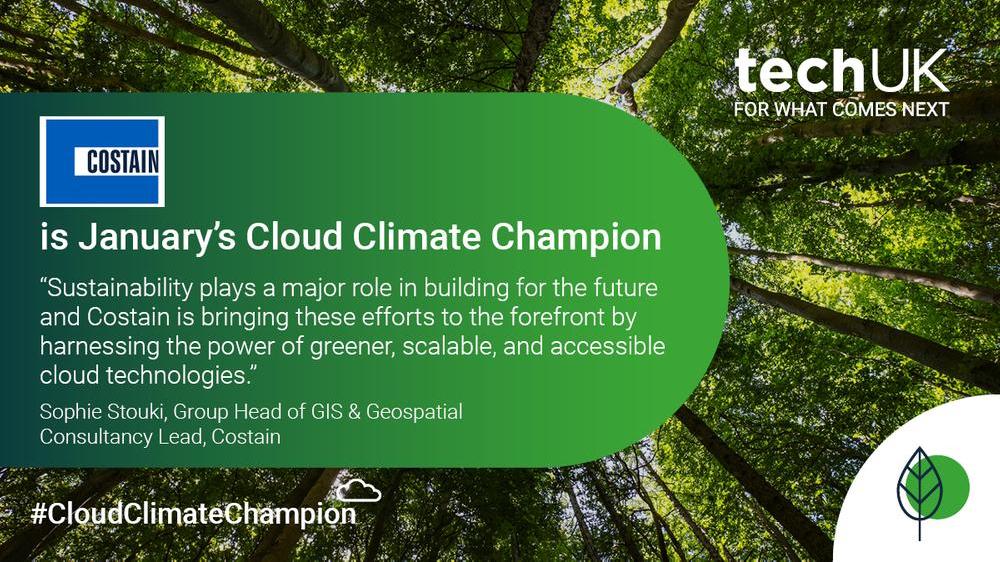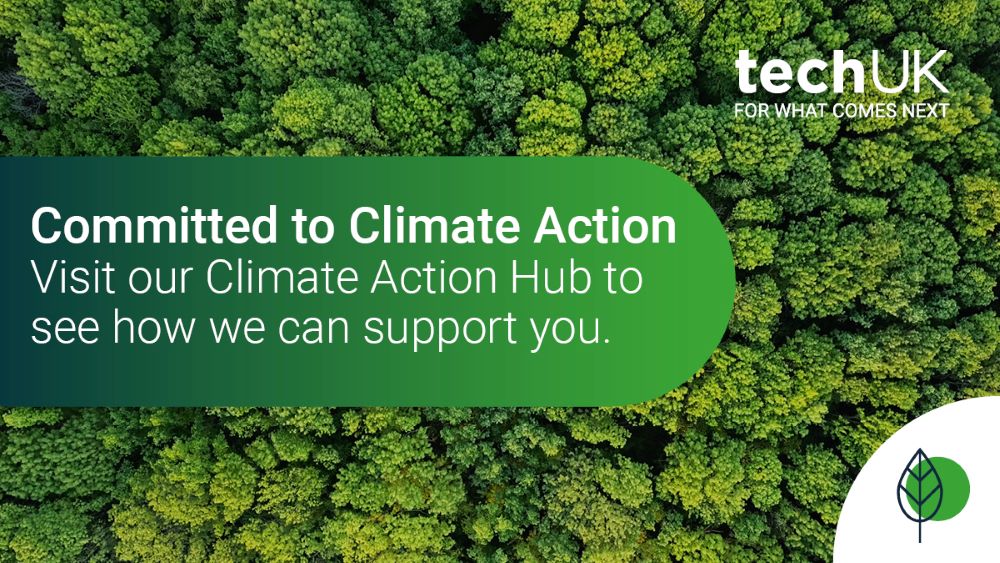How cloud-based infrastructure supports sustainable practices as part of a digital transformation journey (Guest Blog from Costain)

Author: Sophie Stouki, Group Head of GIS & Geospatial Consultancy Lead, Costain
As a principal contractor, our business activities in the infrastructure space have an impact on the environment and surrounding areas in which we operate, which makes creating connected, sustainable infrastructure systems one of our main priorities. In order to better manage and monitor these activities, organisations like Costain have embarked on a digital transformation journey to introduce efficiencies and engrain sustainability in our daily practices towards reaching decarbonisation and Net Zero goals.
As part of that journey, we have introduced cloud-based initiatives and processes to support reducing carbon and material waste on our sites, eliminate paper-based processes and resulting resource duplication, and monitor biodiversity goals across our projects. Using cloud-based technologies, we can be more efficient in planning environmentally friendly operations, manage and maintain data in a responsible way while following best practise around data storage and archiving. At the same time, we advise and support our projects and clients around natural capital and carbon sequestration through our cloud-hosted tools and databases, thus deriving maximum value from the wealth of information available to us, either through our own data collection or open data initiatives.
Using cloud-based technologies, we can be more efficient in planning environmentally friendly operations, manage and maintain data in a responsible way while following best practices around data storage and archiving.
We have been proactive in moving our digital capabilities on the cloud, including our secure geospatial platform and services. This is important since we have realised efficiencies around data accessibility and availability, on-demand and regardless of location, data capturing and client or stakeholder feedback analytics, straight onto our cloud-hosted databases and systems, as well as improvements on the way we manage and report biodiversity metrics for our sites. This strategy truly supports our approach around having the right information, at the right time and for the right people, who need to make data-driven, evidence-based decisions that support our sustainability and ESG (Environmental, Social, and Governance) initiatives.
Additionally, cloud-based geospatial applications play a major role in improving logistics through optimised routes, reduced carbon emissions from repeat site visits, efficient scheduling and re-planning, and overall helping us manage our supply chain in an optimised, greener way. These tools are securely accessible via a number of devices, including desktop and mobile, thus introducing agility and flexibility in our operations by ensuring we have the right insights and holistic view of our supply chain for sustainable and efficient decision making.
Introducing cloud-based systems and processes plays a big part in improving our energy footprint by alleviating the requirement around managing and maintaining costly physical infrastructure.
Lastly, introducing cloud-based systems and processes plays a big part in improving our energy footprint by alleviating the requirement around managing and maintaining costly physical infrastructure. Using capabilities on the cloud allows us to consume resources only when there is a business requirement and be flexible in scaling up or down based on our growth patterns. Even computationally intensive and large data analytics processes are run in a more sustainable way, not on individual high-spec workstations, but on the cloud by introducing localisation and instant resource allocation. We can thus meet temporary demand spikes, while improving performance from running tasks closer to where the data or users are located.
This flexible and modernised cloud based digital ecosystem helps us integrate applications, systems and data, which is instrumental in achieving efficiencies from resource deduplication, reduction in carbon and energy consumption, as well as creating a sustainable digital roadmap for future requirements.
We are purposefully using the term digital journey since this cultural change around cloud-based transformational practises does not happen overnight. Introducing different ways of operating requires careful planning, communication and collaboration between multi-disciplinary teams across an organisation, with clear benefits and defined outcomes for each department. Undergoing this exercise, as tedious and time -consuming as it might appear, can provide valuable insights around achieving sustainable growth as part of a step change initiative around driving greener and more sustainable practises.
techUK – Committed to Climate Action
By 2030, digital technology can cut global emissions by 15%. Cloud computing, 5G, AI and IoT have the potential to support dramatic reductions in carbon emissions in sectors such as transport, agriculture, and manufacturing. techUK is working to foster the right policy framework and leadership so we can all play our part. For more information on how techUK can support you, please visit our Climate Action Hub and click ‘contact us’.



